Millions upon millions of tourists visit Barcelona every year, making it one of the world’s most popular travel destinations. The question is, why does it have such a large fan base? To put it simply, it provides almost everything a traveler might want on vacation. Convenient location, pleasant climate, picturesque beaches and surrounding mountains, lively nightlife, delicious regional food, and a rich cultural and historical heritage.
The city is a tourist’s dream since it is home to so many famous landmarks. Barcelona is a city with many choices, and its attractions appeal to visitors of all demographics (family, couples, and solo travelers alike). Here are some of the top Barcelona sights that visitors shouldn’t miss if they make the trip to the Catalan capital:
25. Monastery of Pedralbes
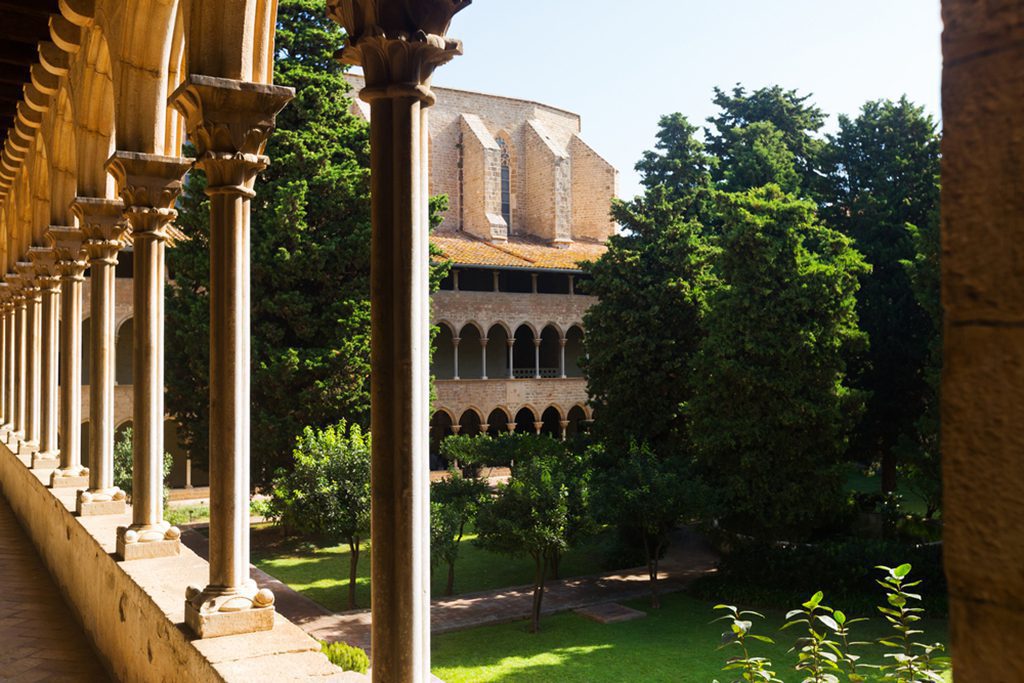
The inner courtyard of the Pedralbes Monastery in Barcelona, Spain. Image source: BearFotos/Shutterstock.com
The Monastery of Pedralbes is a haven from the bustle of Barcelona, a place where visitors can relax in peace and beauty. Queen Elsenda, in need of forgiveness, commissioned the construction of this gothic monastery in 1290. It is a masterpiece of Catalan Gothic design.
The waving palm trees can be seen from the outer corridors, which have arched ceilings. The city was originally defended by the Poor Clares, a religious order made up of women from privileged families. The convent is now the city museum, yet some nuns still call it home.
24. Palau Guell
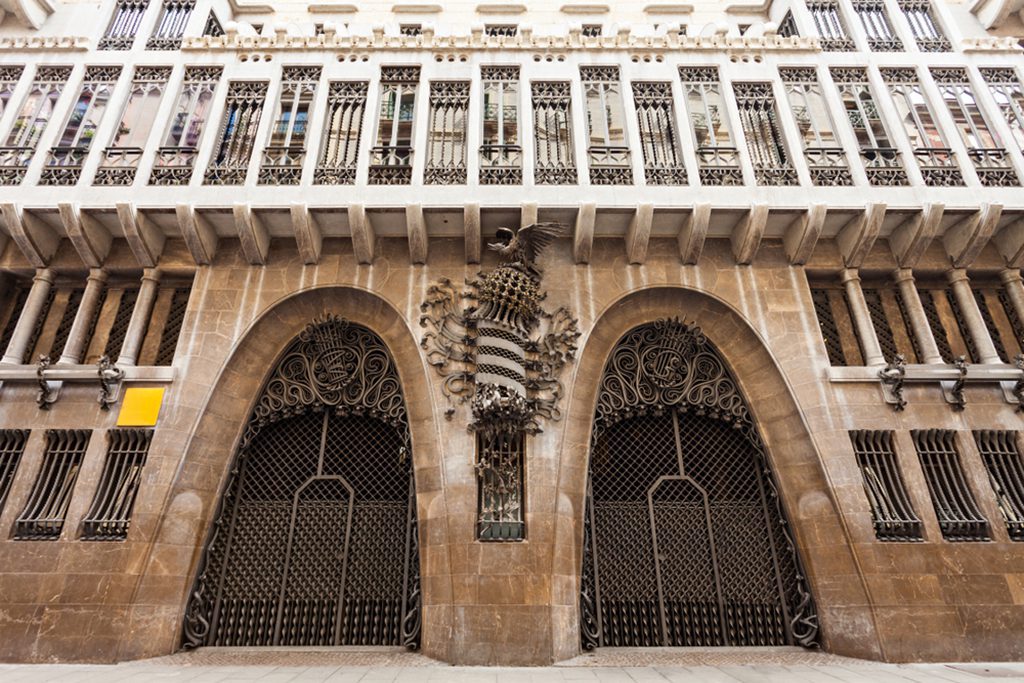
The Guell Palace or Palau Guell, an iconic modernist building in Barcelona, Catalonia, Spain. Image source: saiko3p/Shutterstock.com
Antoni Gaudi, a famous architect, created many of the notable structures in Barcelona. Palau Guell, also known as Palace Guell, is a great introduction to his work for tourists. One of his first works of note, it established his signature style and informed his subsequent work.
Gaudi’s Palau Guell was commissioned by a very affluent client. The mansion was built around a grand hall to accommodate the tycoon’s many parties, with individual chambers tailored to the demands of his family. Gaudi’s Palau Guell displayed forward-thinking space and lighting concepts for its day.
23. Poble Espanyol
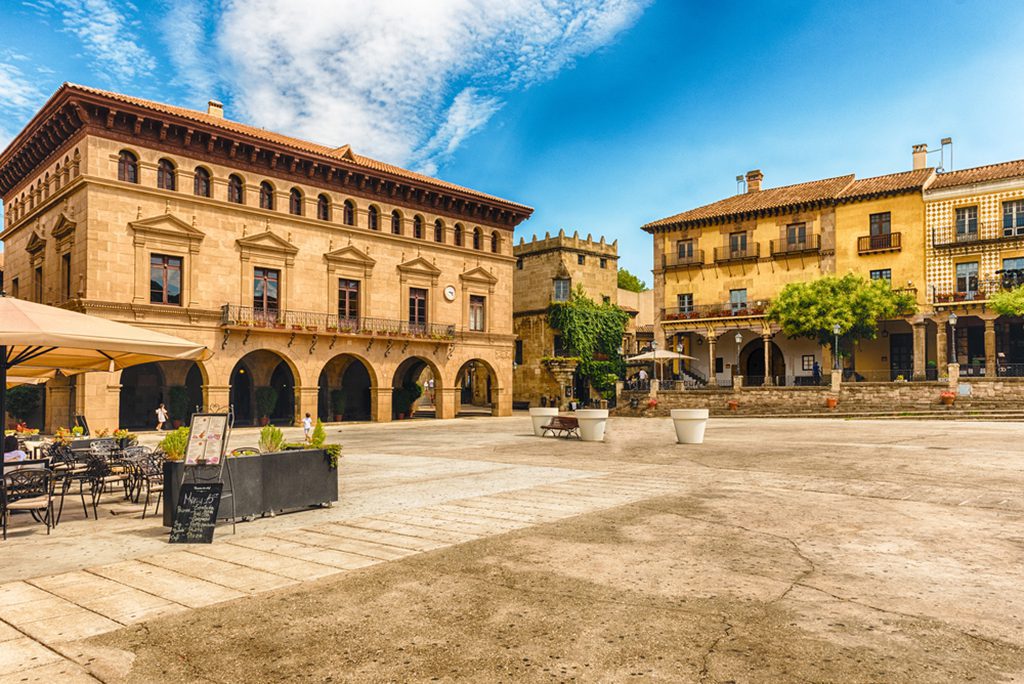
The main square, or Plaza Mayor, in the Poble Espanyol cultural center in Barcelona. Image source: Marco Rubino/Shutterstock.com
Poble Espanyol, which opened in 1929, is a massive outdoor museum that is four times the size of FC Barcelona’s football field. Various portions of the complex, each named after a different area of Spain, make up the whole.
There’s also a bustling souvenir market full of locally made products. In a short amount of time, you can travel from Andalusia to the Balearic Islands, stopping at replicas of Spanish architecture that are astonishingly accurate. The village is also home to the fascinating collection of Picasso and Miró at the Fondation Fran Daurel.
22. Fundacio Joan Miro
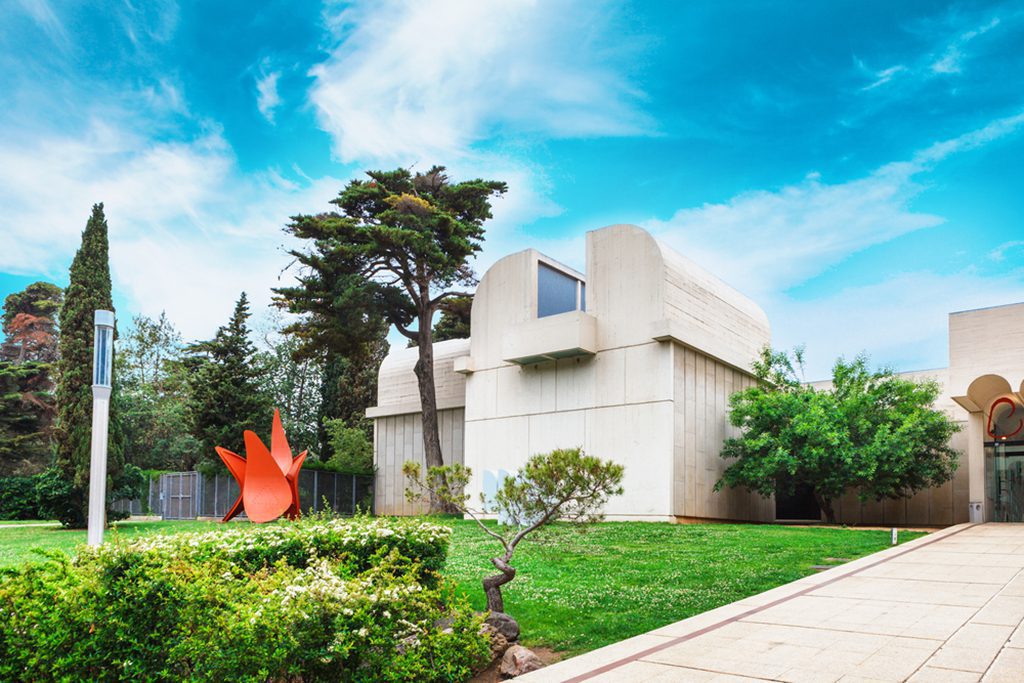
The Joan Miro Museum of modern art in Barcelona, Spain. Image source: alionabirukova/Shutterstock.com
One of the most well-known painters in Barcelona, Joan Miro, was a true master whose works were recognized all over the globe. The Fundacio Joan Miro was established by Miro during his lifetime to perpetuate his legacy and continue his work long after he was gone.
Using Miro’s own works as a jumping-off point, it encouraged younger artists to investigate the state of modern art. Opened in a sleek new structure in 1975, the foundation houses a substantial body of Miro’s work.
21. Museu Nacional d’Art de Catalunya
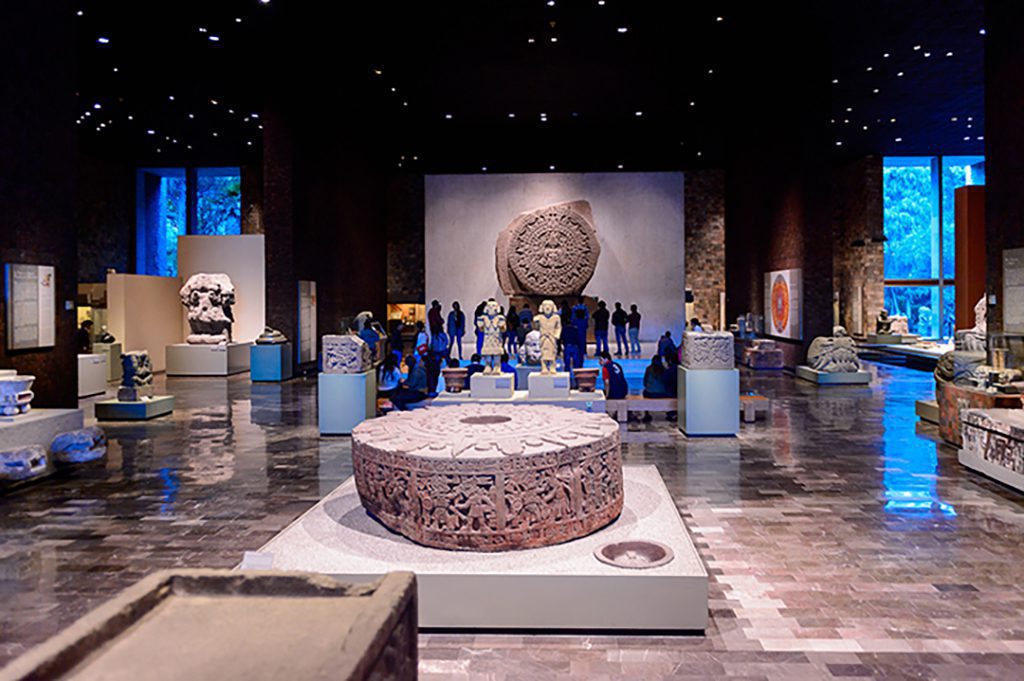
The Museu Nacional d’Art de Catalunya, located on top of a hill, has the appearance of a gigantic castle rather than an art museum, yet it really houses works of art worth more than a king’s ransom. However, the best Catalan artwork from the 10th to the 20th centuries can be found at this museum.
There are beautiful examples of Romanesque art that adorned church apses and Gothic pieces from the time of Catalonia’s Mediterranean expansion. El Greco and Velasquez, two of the greatest painters to come out of Spain, also have works on display here.
20. Arc de Triomf
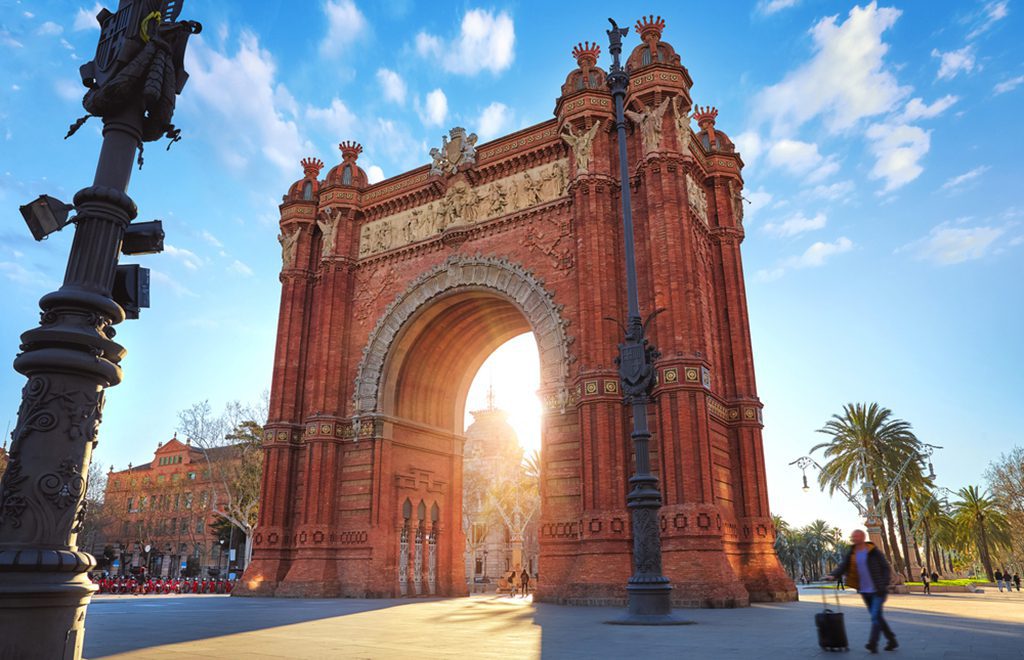
The Triumphal Arch in Barcelona, Catalonia, Spain. Image source: Yasonya/Shutterstock.com
In 1888, when Barcelona hosted the Universal Exhibition, the first ever world’s fair, the Arc de Triomf was built to greet people from all over the globe. You can find the huge ornamental arch on Passeig Llu’s Companys, a pedestrian walkway.
The arch was built in the classical style and is now a well-known landmark in Barcelona because of the sculptures that adorn it. The reliefs in the exhibition praise such economic pillars as agriculture, industry, and trade, and one frieze greets visitors. The arch is crowned with the coat of arms of Barcelona, which is surrounded by the shields of Spain’s individual provinces.
19. Sant Pau Recinte Modernista
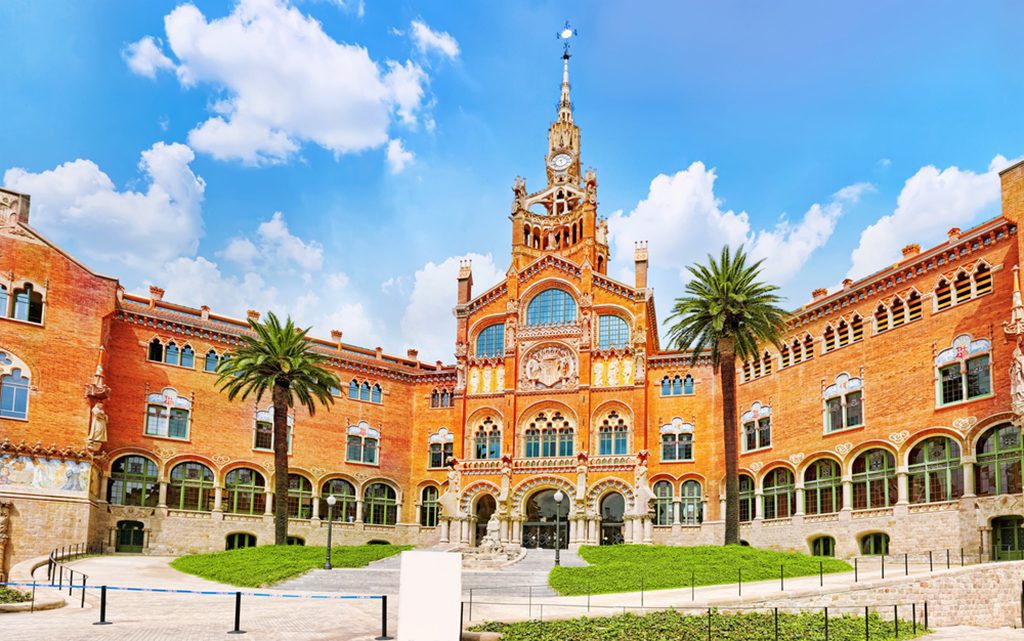
A view of the colorful and ornate architecture of Hospital Sant Pau Recinte Modernista in Barcelona, Spain. Image source: V_E/Shutterstock.com
Tourists interested in art nouveau should include Sant Pau Recinte Modernista on their schedule for Barcelona. The former hospital, which now has a church-like front, is the most important art nouveau building in all of Europe. The modernist hospital and medical research complex known as Sant Pau was constructed in the early 20th century.
After a century of service, it is now home to several different international organizations. A pavilion dedicated to Barcelona’s medical history can be found inside the complex’s underground tunnel system.
18. Placa de Catalunya
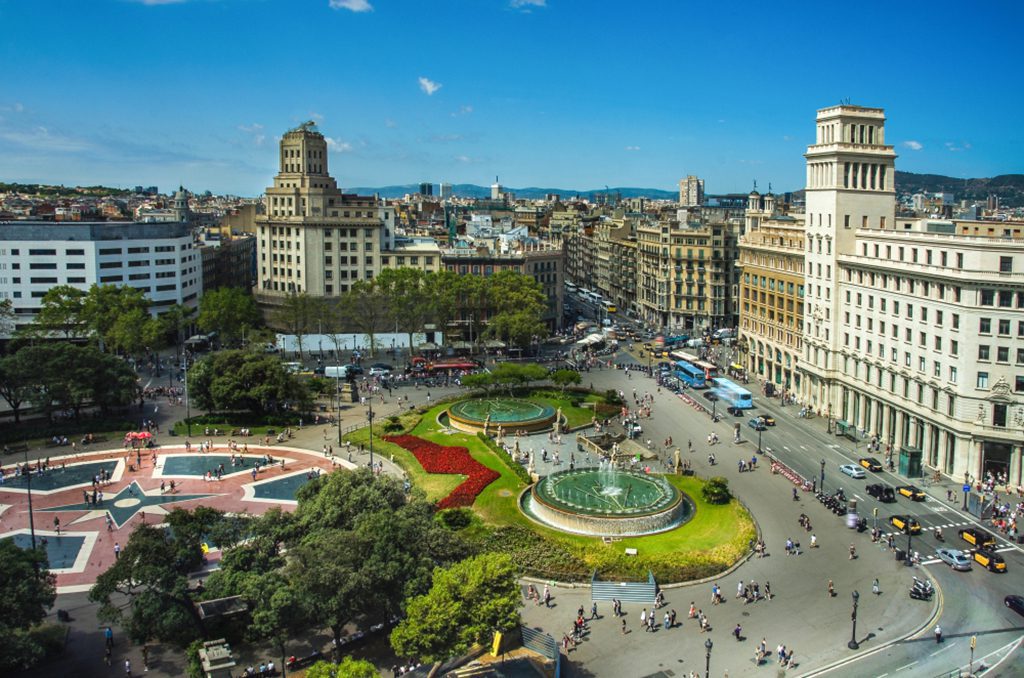
the beauty of Placa Catalunya in Barcelona, Spain. Image source: Marianna Ianovska/Shutterstock.com
There is always a large central plaza in every city where locals assemble to hold events, memorialize loved ones, and catch up with friends and neighbors. We have Times Square in New York, Tiananmen Square in Beijing, and Placa de Catalunya in Barcelona. The city’s center is a great area to take a break from shopping or meet up with friends and relax on the grass.
A total of six sculpture groups depicting the four Catalan capitals of labor and knowledge are built within the area. Originally located in front of the city gates of walled Barcelona, the plaza opened to the public in 1927.
17. Palau de la Musica Catalana
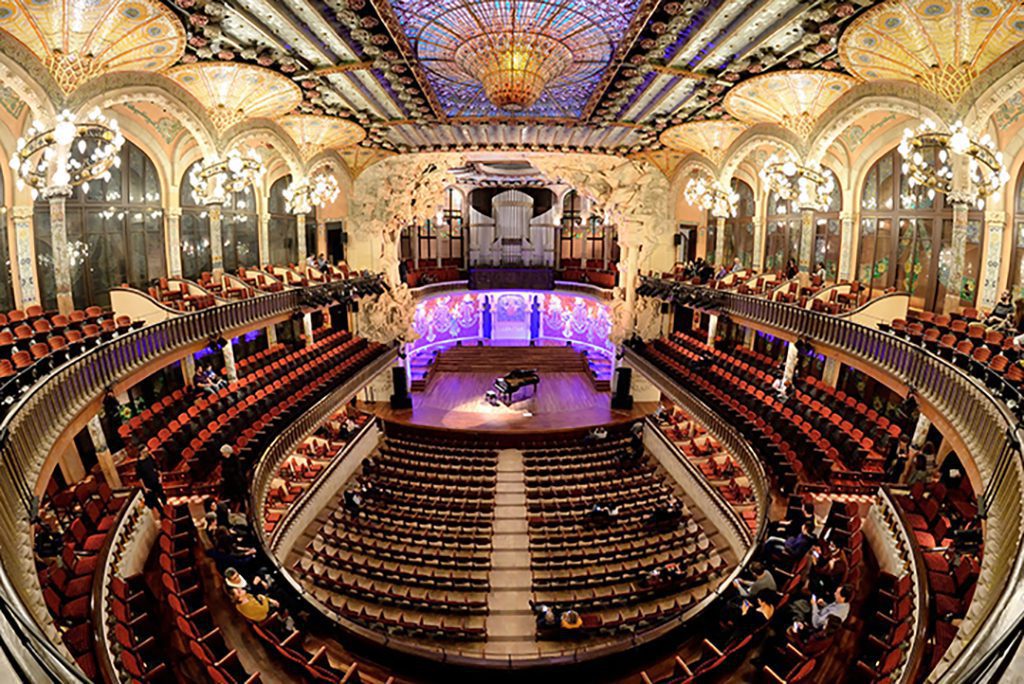
A colorful view of the Palau de la Musica Catalana in Barcelona, Spain. Image source: Christian Bertrand/Shutterstock.com
A visit to the Palau de la Musica Catalana isn’t complete without taking in the magnificent decor. The glass dome of the main music hall makes the building’s facade pale in comparison.
The early 20th-century Palau de la Musica Catalana was designed to be a tourist destination in its own right, thanks to its elaborate stained-glass windows and grand chandeliers. Some have said that the inside of the ancient hall looks like the decoration of a Fabergé egg. a smaller, more contemporary, and understatedly lavish hall.
16. Tibidabo
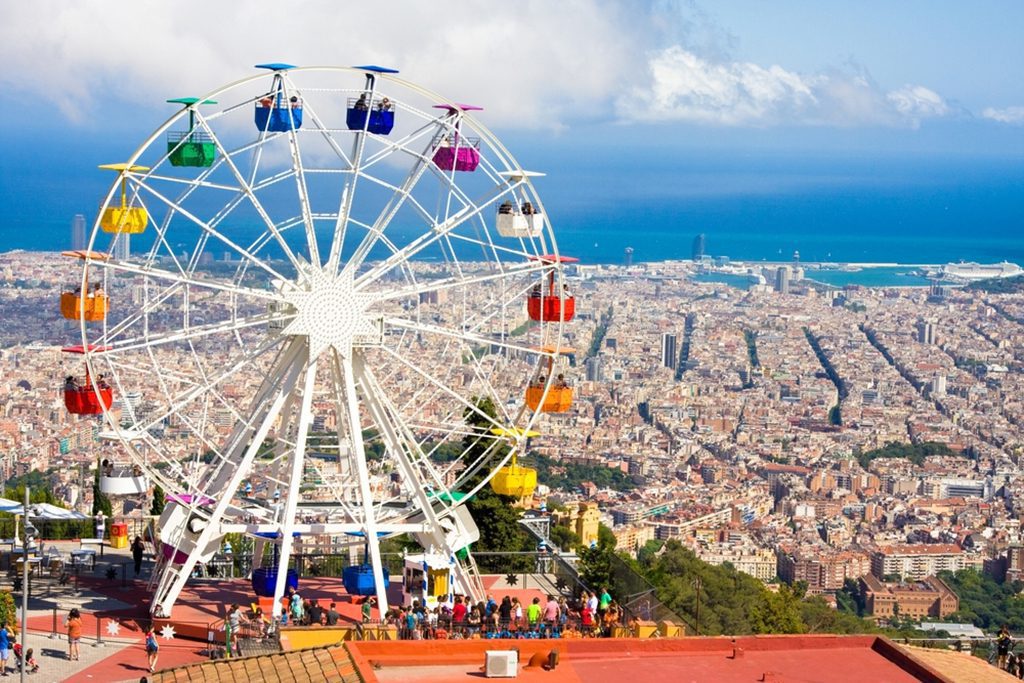
Enjoy a panoramic view of Barcelona from the top of the Ferris wheel in Tibidabo. Image source: Irina Papoyan/Shutterstock.com
Tibidabo is the tallest peak in the Barcelona area, standing at 512 meters (1,880 feet) above sea level. The first funicular in Spain is the quickest and most convenient option. The mountaintop offers more than simply breathtaking scenery, however.
The Sagra Cor church was constructed over the course of 60 years and has a sculpture of the Sacred Heart of Jesus atop its dome. This magnificent church is next to a theme park and a communications tower. Seeing all three from Barcelona is easy.
15. Parc de la Ciutadella
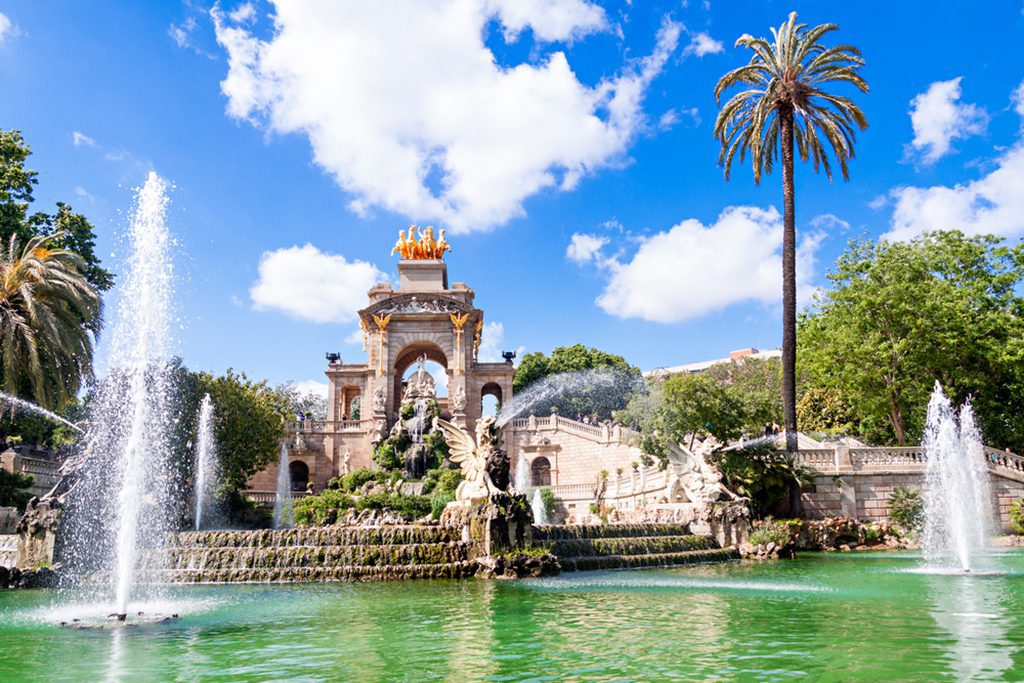
A beautiful view of the fountain in Parc de la Ciutadella in Barcelona, Spain. Image source: peresanz/Shutterstock.com
As compared to when it first opened in 1714, the Parc de la Ciutadella is a much brighter and more enjoyable location to spend time now. After Philip V’s conquest of Barcelona, the Catalans were subjected to forced labor to construct Europe’s biggest citadel so that he could keep them under his thumb.
Over the ages, it shifted to more peaceful usage, eventually becoming a significant urban sanctuary. The Universal Exposition of 1888 was held at Citadel Park. A zoo, a small lake, the Museum of Natural Science, and a memorial to Catalan soldiers who died in World War I can all be found there today.
14. Barcelona Cathedral
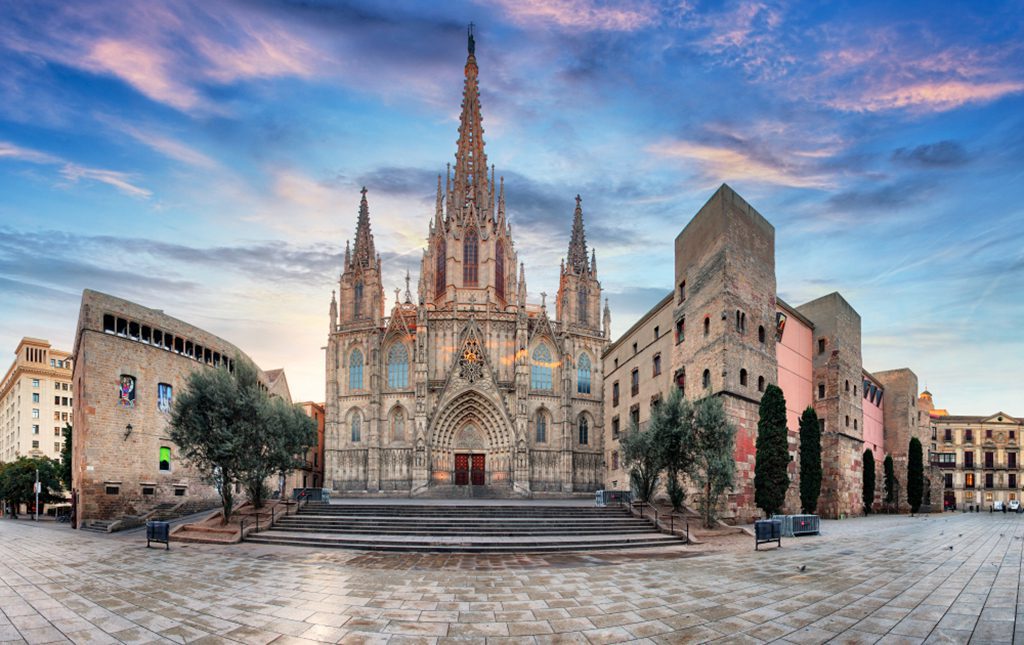
There are several stunning Gothic structures in Barcelona, and the Cathedral of the Holy Cross and Saint Eulalia is only one of them. The cathedral church of Barcelona is popularly known as La Seu or Barcelona Cathedral.
The cathedral was constructed in the 14th century to remember St. Eulalia, the co-patron saint of Barcelona, who was rolled down the street by Romans in a barrel full of knives. Every part of the church is elaborate, culminating in soaring spires and turrets. Because of its high visitor volume, a souvenir store has just opened there.
13. Museu Picasso
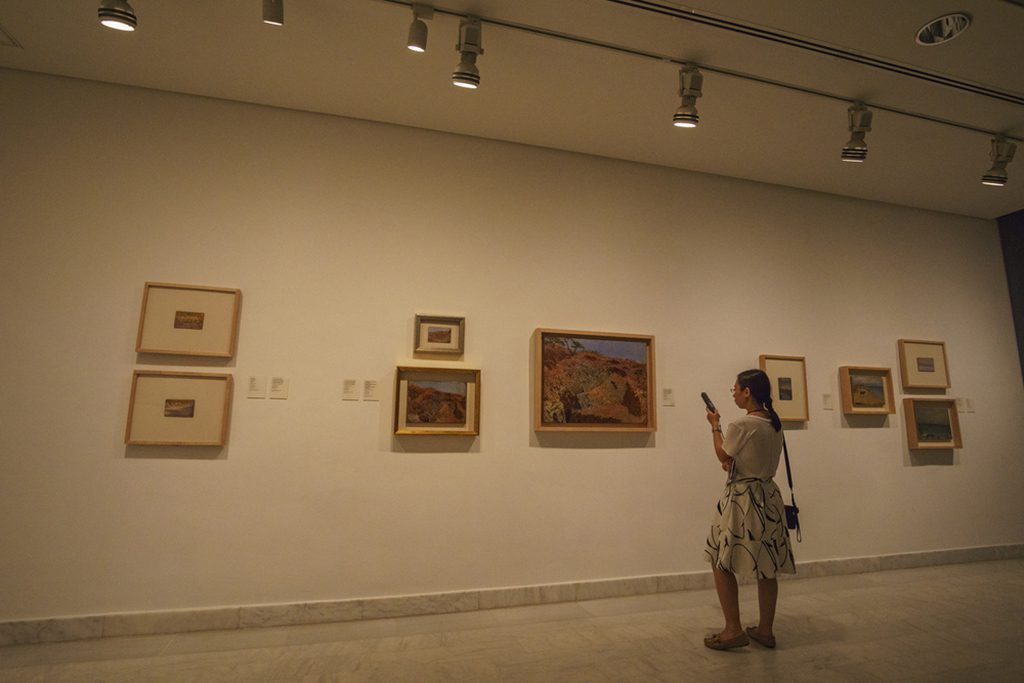
The Museu Picasso is home to one of the largest collections of Pablo Picasso’s work, numbering in excess of four thousand pieces.
In particular, the Museu Picasso sheds light on Picasso’s lifelong connection to Barcelona, which began during his formative years. The museum occupies five neighboring medieval palaces in Barcelona’s La Ribera area.
12. La Boqueria Market
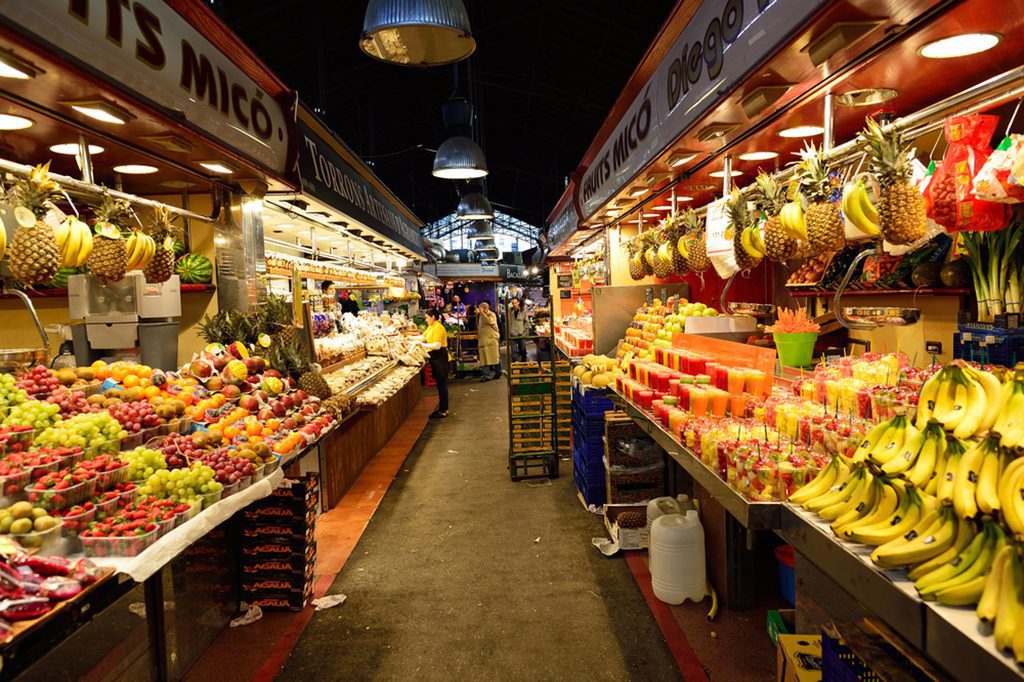
Visitors to the historic district’s colorful market (and popular tourist destination) La Boqueria Market may feel as if they’ve died and gone to market paradise. Located right off La Rambla, the market dates back to 1297, when meat was sold at the city gates. These days, they sell a wide variety of foods, not only meat.
More than 200 vendors provide a wide variety of cuisine, from fresh farm produce and seafood to spices and sweets. You can either stop for lunch at one of the numerous restaurants or stock up on picnic supplies.
11. Santa Maria del Mar
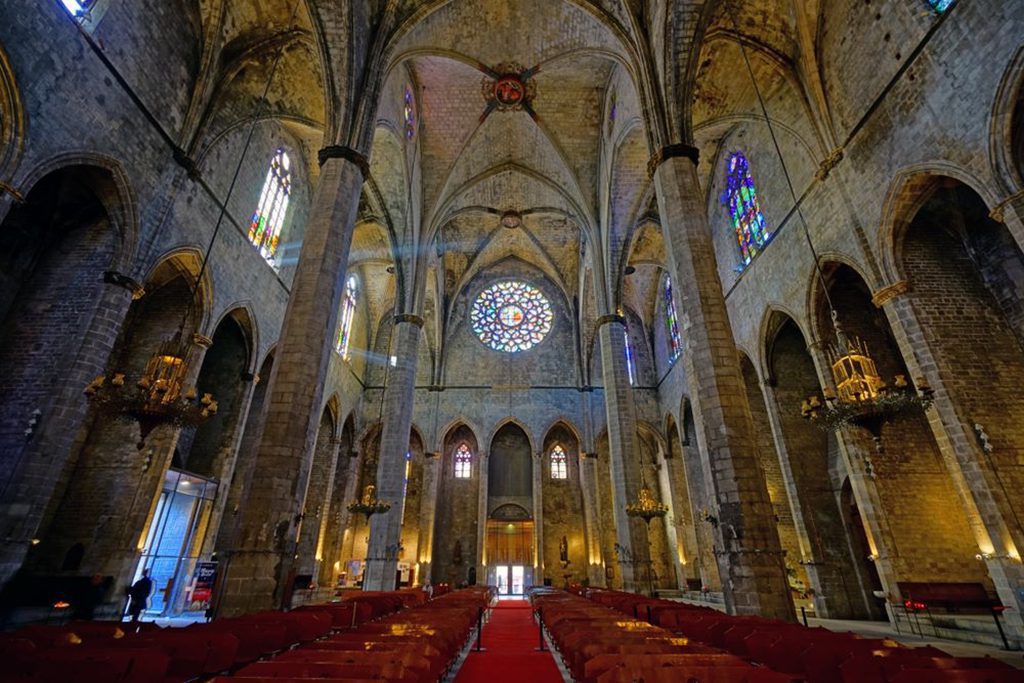
One of the most recognizable symbols of Catalan Catholicism is the stunning Santa Maria del Mar (Saint Mary of the Sea). In 1329, King Alfonso IV of Aragon laid the cornerstone for this enormous church. Completed in 1384, it is a shining example of Catalan Gothic design.
The inside makes up for the harsh exterior in spades. Feelings of calm and space are evoked by the combination of high, slender columns, simple architecture, and beautiful stained glass windows. The cathedral has been ravaged by earthquakes and fires over the years, yet it has always managed to rise from the ashes and seem as stunning as ever.
10. Camp Nou
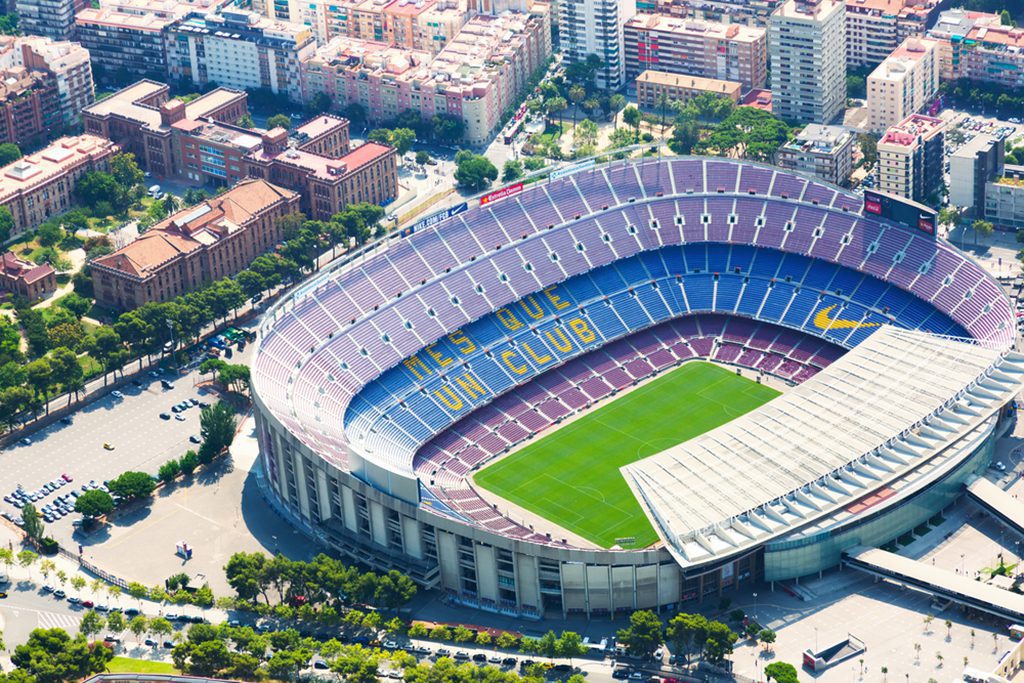
Camp Nou is the largest stadium in Europe and the home of FC Barcelona. Image source: BearFotos/Shutterstock.com
An attraction for sports lovers, but nevertheless a top draw in Barcelona. Defending European champions F.C. Barcelona play their home games at this stadium.
This stunning stadium is Europe’s biggest, holding up to 99,000 spectators. It’s well worth your time to take a tour of the stadium, and you might even be able to see a game if you’re lucky.
9. Montjuïc
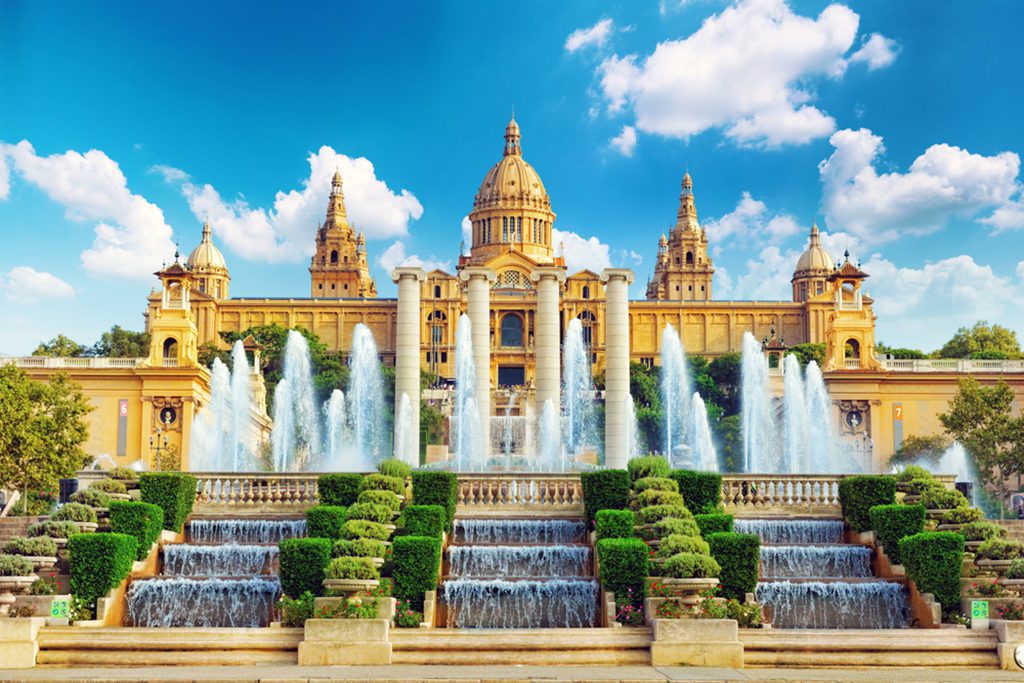
The National Museum of Art of Catalonia, located in Plaça d’Espanya in Barcelona. Image source: V_E/Shutterstock.com
Located to the southwest of the downtown area, Montjuïc is a large, shallow hill with a rather flat summit. The hill’s eastern slope is almost a cliff, providing a breathtaking panorama of the city’s port below. Multiple defensive structures were built atop the hill, the most recent of which is still standing.
The National Palace (Palau Nacional), which was constructed as the main pavilion for the International Exhibition, is another must-see. The Museu Nacional d’Art de Catalunya is housed in this magnificent neo-Baroque structure (MNAC). Several sporting venues constructed for the Olympic Games of 1992 can also be found on Montjuïc .
8. Casa Milà
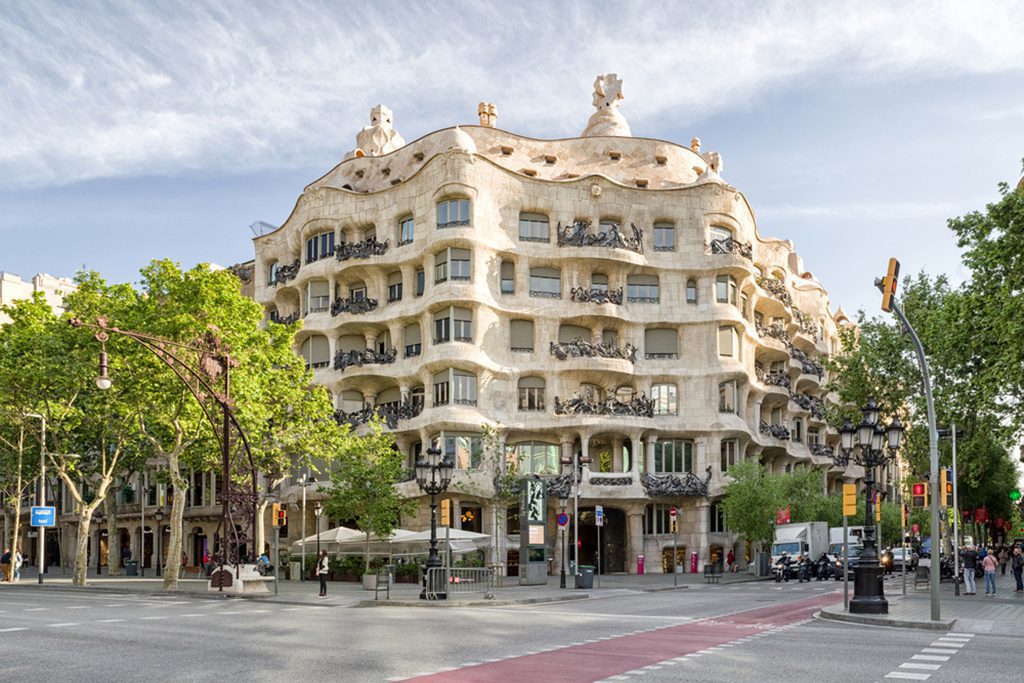
Casa Mila, also known as La Pedrera, Barcelona, Spain, designed by Antoni Gaudí. Image source: Jaroslav Moravcik/Shutterstock.com
The Catalan architect Antoni Gaudi’s last civil construction, Casa Milà (La Pedrera), was constructed between 1906 and 1910. There isn’t a single straight edge on the building’s facade, but it only makes it more interesting.
The interior and the amazing roof structures can be seen during a tour. In addition to La Pedrera, it has a comprehensive Gaudi exhibition that includes showcases for Sagrada Familia and Casa Batllo.
7. Gothic Quarter
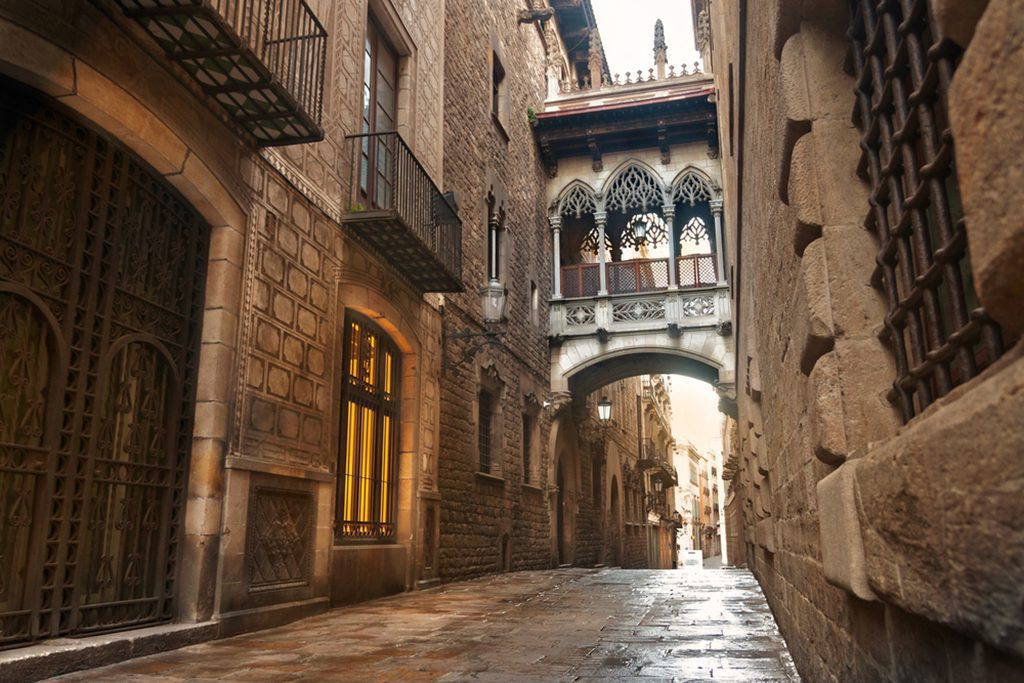
The Gothic Quarter, or Barri Gòtic, is a historic neighborhood in the heart of Barcelona. Image source: peresanz/Shutterstock.com
If you’re going to visit a historic building, make it the Gothic Quarter in Barcelona’s Old Town. The area’s alleged antiquity extends back two millennia, although visitors will find a far more recent architectural mix of medieval and Victorian eras.
The Jewish Quarter, one of the most picturesque parts of the Gothic Quarter, can be visited, as can the city’s oldest restaurant, Can Culleretes (1796), and the vibrant Boqueria market.
6. Barceloneta
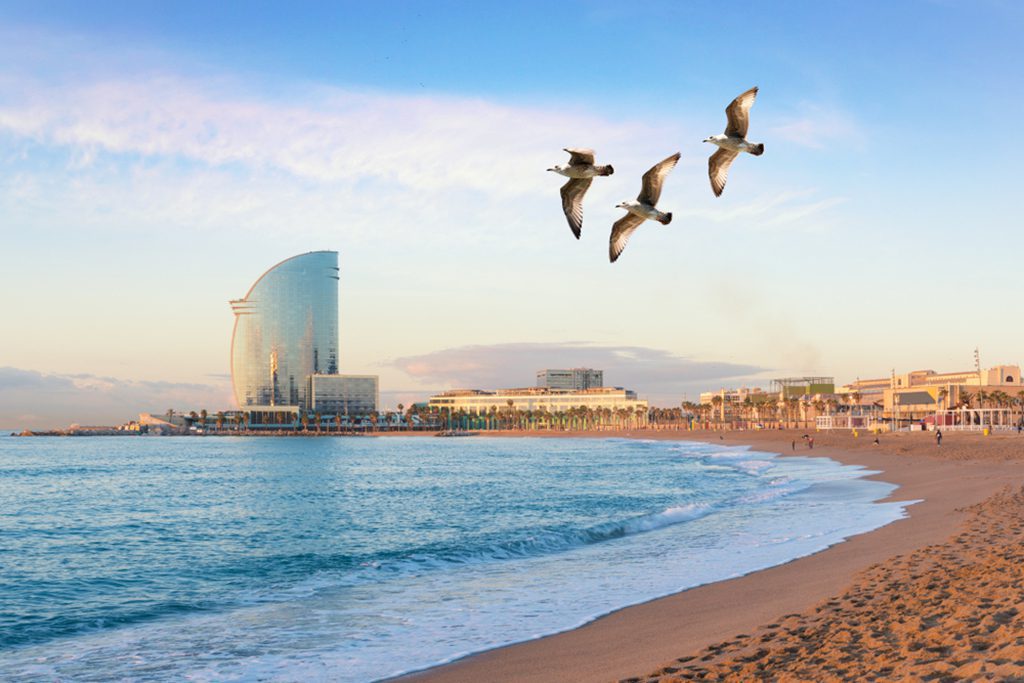
Barceloneta Beach is a popular destination for sun, sea, and sand in Barcelona. Image source: Travelpixs/Shutterstock.com
There are seven beaches in Barcelona, extending for a total of 4.5 kilometers (2.8 miles), but Barceloneta is by far the best. It is conveniently located in the heart of the city, making it a top pick. A path popular with runners and cyclists stretches along the beach’s 1,100 meters (3,600 ft) of sand.
When the beachside bars open for business and the summer crowds arrive, it’s no surprise that the area can become rather busy.
5. Font Màgica
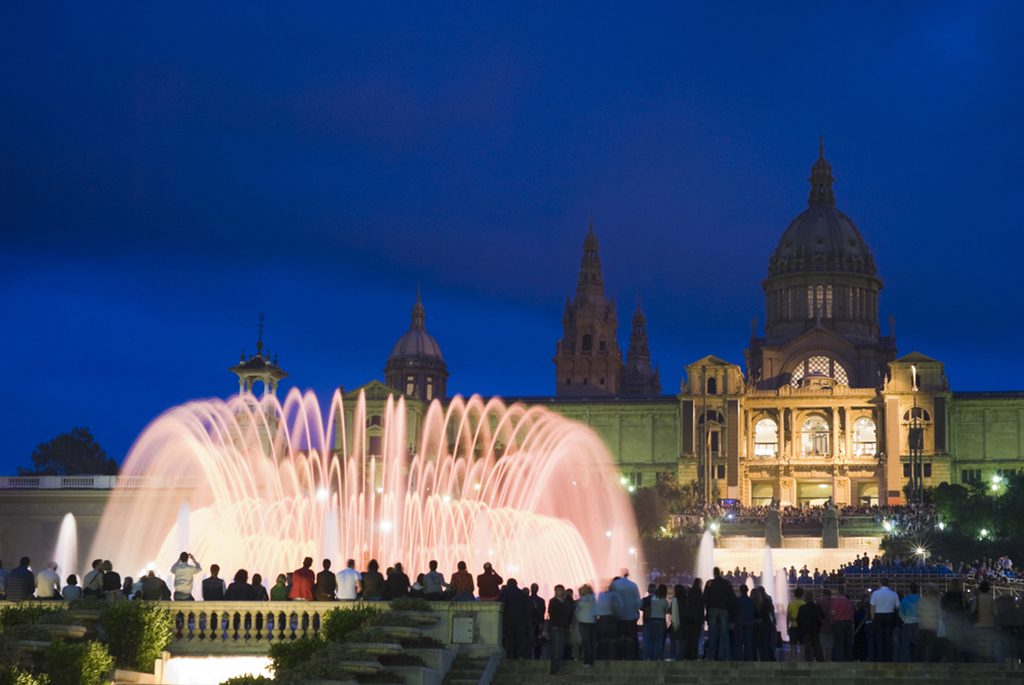
The Font Magica is a spectacular fountain located in the Montjuïc neighborhood of Barcelona, Catalonia, Spain. Image source: Matthew Dixon/Shutterstock.com
Near the Spanish neighborhoods of Plaça d’Espanya and Poble Espanyol in Barcelona, you’ll find the magical Font Màgica fountain, which sits at the base of Montjuc’s Palau Nacional. Along with the majority of the surrounding buildings, the fountain was built specifically for the 1929 Barcelona International Exposition.
Hundreds of people gather to enjoy the fountain’s stunning light, water, and music show on the nights it is energized. The Palau National is also lit up, making for a stunning backdrop.
4. Casa Batllo
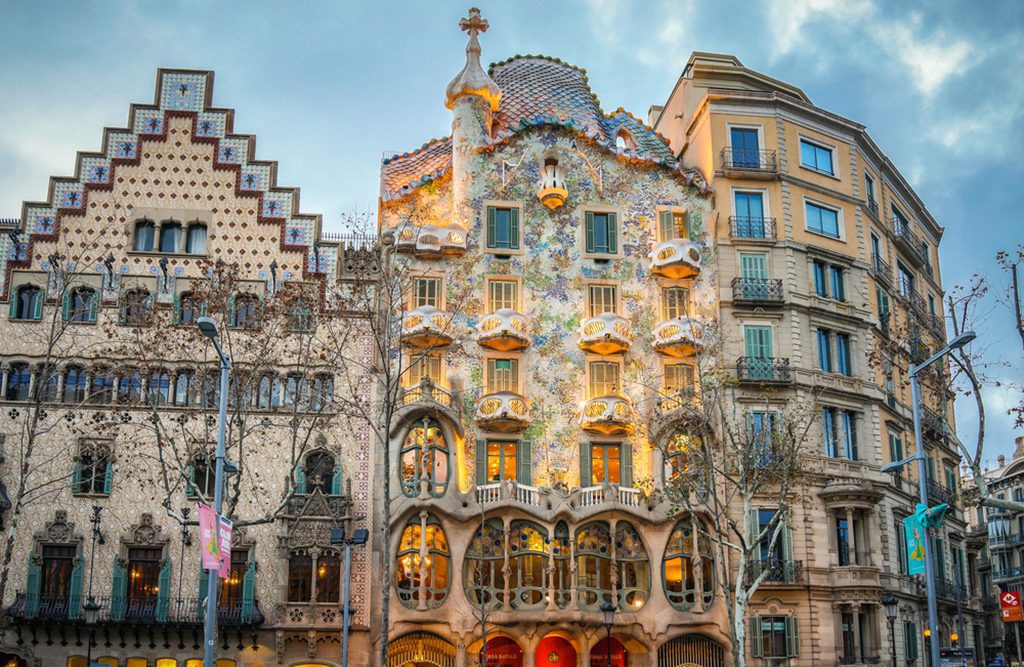
Casa Batllo is a modernist building in the Eixample district of Barcelona, Spain. Image source: Alan Tan Photography/Shutterstock.com
Perhaps because it resembles a madcap carnival, Casa Batllo defies description. Casa Batllo, a well-known structure by Antoni Gaudi, has a jumbled assortment of styles, materials, and colors.
Lots of sculptures decorate the grounds, and the building’s roof is topped with a massive onion-shaped dome evocative of a mosque’s. Casa Batllo, which Gaudi transformed from a 19th-century structure, is also known as the “house of bones” because of the several sets of jaws shown on a single sculpture. Without a doubt, it was the best house in the world, yet few people would have felt at home in it.
3. Parc Guëll
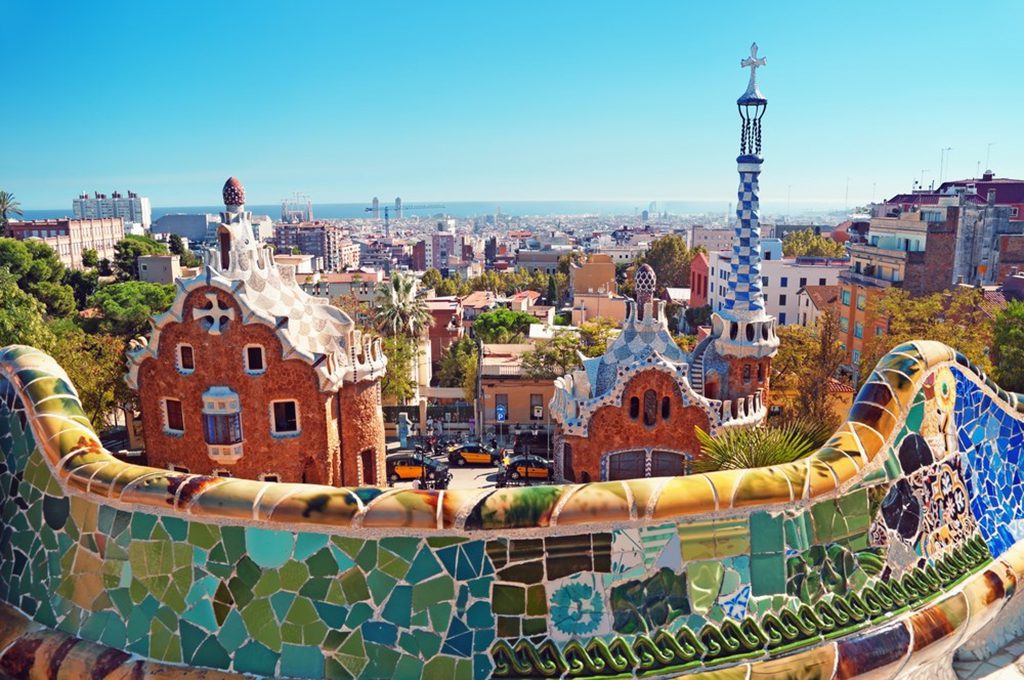
Park Guell is a public park in Barcelona, Catalonia, Spain. Image source: r.nagy/Shutterstock.com
It’s hard to argue that this building isn’t one of Antoni Gaud’s most famous, since it’s easily among the most recognizable symbols of Barcelona alongside La Casa Batlló and La Pedrera.
Before it became a park, Gaudi planned and designed the area for residential use. After constructing only houses on the plot, the city of Barcelona purchased it and converted it into a park. The architect’s other works, including the now-famous Salamander sculpture, can be found there. This is a once-in-a-lifetime opportunity with breathtaking views over the city.
2. La Rambla
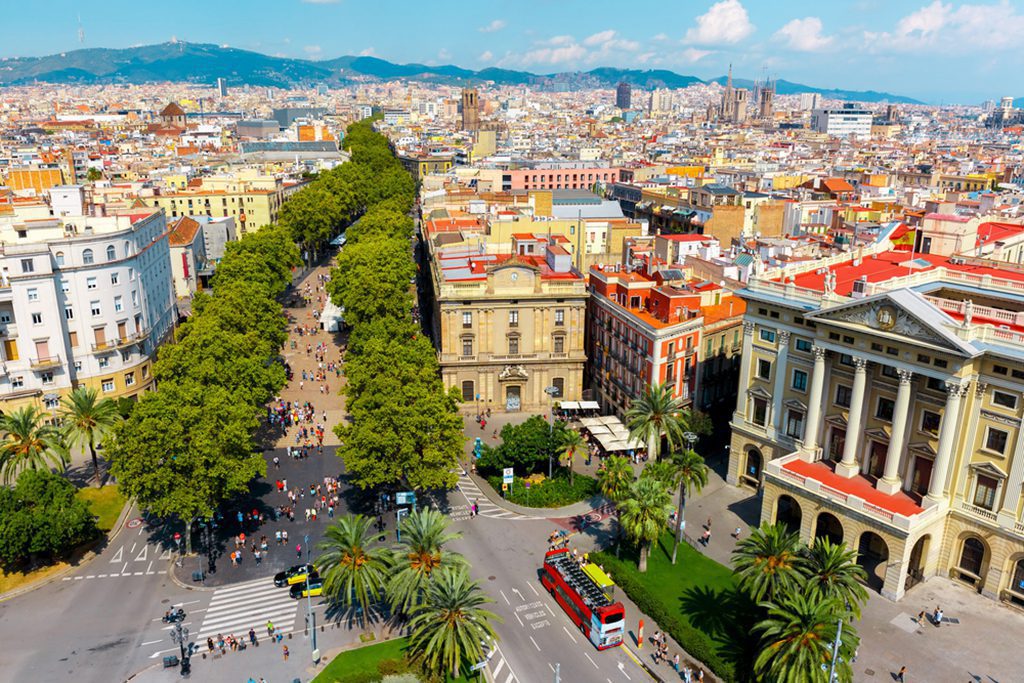
La Rambla is a vibrant pedestrian boulevard in the heart of Barcelona, Catalonia, Spain. Image source: kavalenkava/Shutterstock.com
This is the major street of the city, and it’s always buzzing with people and activity. Las Ramblas is essentially a collection of streets, each with its own character and history, despite its common name.
Immediately next to Plaza Catalunya and continuing all the way to the port and shore, this area is a veritable smorgasbord of sights, sounds, and smells thanks to the magnificent Boquera Market.
1. Sagrada Familia
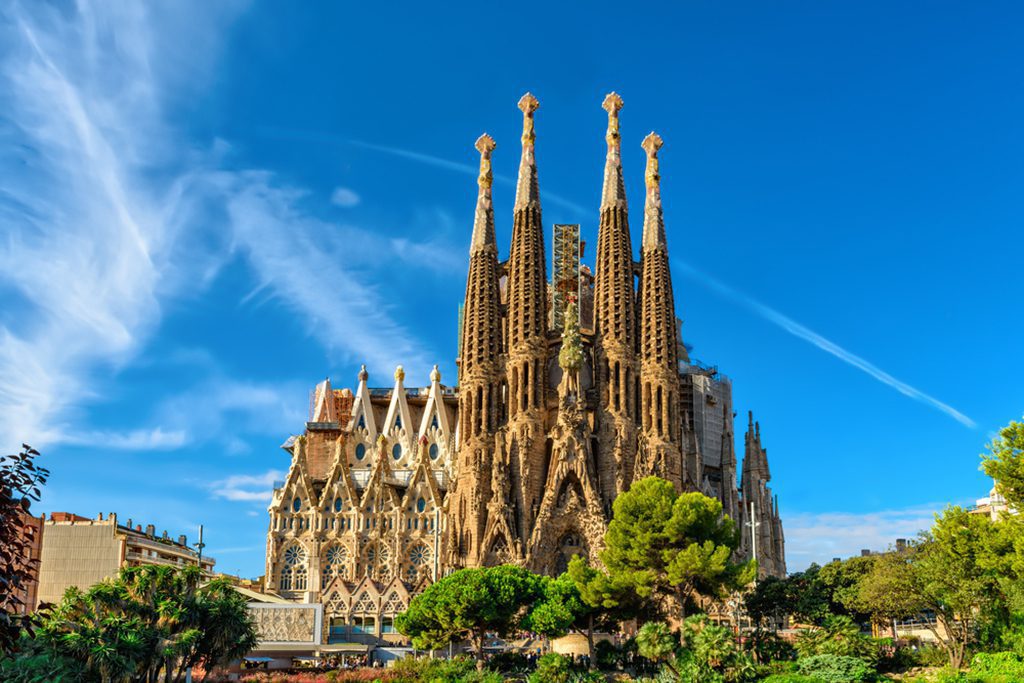
The Basílica de la Sagrada Família is a stunning, unfinished church in Barcelona, Catalonia, Spain. Image source: Valerie2000/Shutterstock.com
Nearly 2.8 million tourists visit La Sagrada Familia every year, making it one of Barcelona’s top attractions. Antoni Gaudi, a Catalan architect, constructed this massive and ornate basilica. The building process started in 1882 and is still ongoing. It’s estimated that it will take 30 years to finish the structure. It’s worth noting that, just as Gaudi had hoped, the whole cost of this stunning basilica has been covered by voluntary contributions.
The diocesan architect, Francisco de Pala del Villar, started construction on La Sagrada Familia in March 1882. At the end of 1883, Gaudi was hired to take over the project. Up until his death on June 7, 1926, at the age of 74, he worked tirelessly on the design and construction of this groundbreaking endeavor.
After Gaudi’s untimely death, the project was completed by successive generations of gifted architects who faithfully followed his designs. Sadly, many of these blueprints burned down in 1936, during the Spanish Civil War. The current architects working on the building have had a hard time deciphering the fragments of the original plans that have survived.


